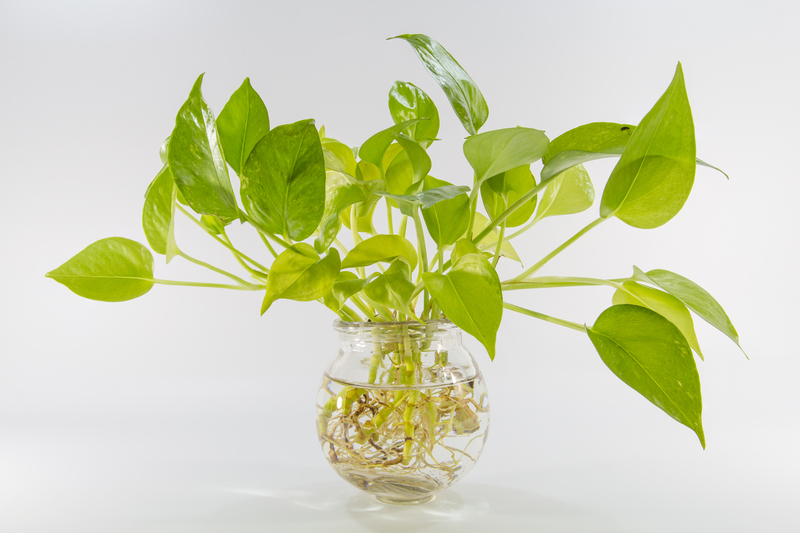Guide: Using a Pressure Washer for Home Exterior
Posted on 26/11/2024
Maintaining the exterior of your home can be a daunting task, especially when dealing with stubborn dirt, grime, and mildew. One effective solution is using a pressure washer. In this comprehensive guide, we'll explore everything you need to know about using a pressure washer for your home exterior, including tips, techniques, and safety measures.
What is a Pressure Washer?
A pressure washer is a mechanical sprayer that uses high-pressure water to remove loose paint, mold, grime, dust, mud, and dirt from surfaces and objects such as buildings, vehicles, and concrete surfaces. They come in electric and gas-powered models, each with its own advantages and best-use scenarios.

Benefits of Using a Pressure Washer
- Efficiency: Pressure washers make the cleaning process much quicker compared to traditional methods.
- Effectiveness: They are capable of removing stubborn stains and buildup that manual scrubbing can't.
- Cost-Effective: While the initial investment might be significant, the long-term benefits outweigh the costs, saving on cleaning supplies and time.
Types of Pressure Washers
Electric Pressure Washers
Electric pressure washers are ideal for lighter cleaning tasks. They are generally quieter, require less maintenance, and are more environmentally friendly. These washers are suitable for cleaning smaller areas such as patios, vehicles, and outdoor furniture.
Gas-Powered Pressure Washers
Gas-powered models are more powerful and suitable for heavy-duty cleaning tasks. They are designed to clean larger areas such as the entire exterior of a house, driveways, and large decks. However, they tend to be noisier and require more maintenance than their electric counterparts.
Choosing the Right Pressure Washer
Selecting the right pressure washer depends on several factors, including the type of tasks you plan to undertake, the surfaces you will be cleaning, and your comfort with handling high-pressure equipment.
PSI and GPM
The power of a pressure washer is measured in PSI (pounds per square inch) and GPM (gallons per minute). Higher PSI and GPM ratings indicate a more powerful machine.
- For light-duty tasks: 1300-2000 PSI and 1.5 GPM.
- For medium-duty tasks: 2000-2800 PSI and 2-3 GPM.
- For heavy-duty tasks: 2800-4000 PSI and 3-4 GPM.
Preparing for Pressure Washing
Safety Measures
Safety should always be a top priority when using a pressure washer. Here are some key safety tips:
- Wear proper protective gear, including gloves, goggles, and sturdy footwear.
- Read the user manual thoroughly before operating the machine.
- Ensure the area you're cleaning is clear of pets, children, and delicate objects.
Surface Preparation
Before you start pressure washing, prepare the surface:
- Remove any loose debris, such as leaves and branches, from the area.
- Cover exterior lights, electrical outlets, and other sensitive fixtures with plastic to protect from water damage.
- Use a broom to sweep away loose dirt, dust, and cobwebs.
Pressure Washing Techniques
Setting Up the Washer
Correct setup is crucial for efficient and safe pressure washing. If you're using an electric pressure washer, ensure the power source is close by. For gas-powered models, make sure the machine is filled with the proper fuel and oil levels.
Attach the appropriate nozzle to the wand. Nozzles come in different colors, signifying different spray angles and pressures:
- Red (0?): High-pressure pinpoint spray for tough stains
- Yellow (15?): Medium-pressure for paint prep
- Green (25?): General cleaning
- White (40?): Light cleaning
- Black (65?): Low-pressure soap application
Operating the Washer
When using a pressure washer, maintain a sufficient distance from the surface to avoid damage. Start with a wider spray angle and lower pressure, then gradually move closer or switch to a higher pressure if needed. Always keep the wand moving to prevent damage.
Common Tasks for a Pressure Washer
Cleaning Siding
Pressure washing is highly effective for siding, especially material like vinyl. Use a lower pressure setting to avoid damage and ensure you work from the top down. Always spray at a downward angle to prevent water from getting behind the siding.
Washing Windows
To avoid damage, use a low-pressure nozzle when pressure washing windows. Maintain a safe distance to prevent the high-pressure stream from breaking the glass or affecting the sealing.
Deck and Patio Cleaning
For wood surfaces, use a wide-angle nozzle to avoid damaging the wood grain. Move the wand in a sweeping motion following the length of the boards, maintaining consistent distance and speed.
Post-Washing Tasks
Inspecting the Cleaned Areas
After washing, inspect the surfaces for any areas that may need further attention. Some stubborn spots might need another round or a manual scrubbing.
Drying
Allow surfaces to dry thoroughly. This is particularly important for wooden areas and surfaces that will be painted or stained afterward.
Storage and Maintenance
Proper maintenance ensures the longevity of your pressure washer. Drain any remaining water, remove the hose and accessories, and store the machine in a dry place. Regularly check and clean the nozzles and inlets.

Final Thoughts
Using a pressure washer can significantly reduce the amount of time and effort needed to clean your home's exterior. By choosing the right machine for your needs, preparing adequately, and following proper techniques, you can keep your home's exterior looking pristine. Remember, safety should always be your top priority when operating a pressure washer.
Conclusion
In summary, pressure washing is an invaluable tool for maintaining the exterior of your home. From preparing the surfaces to selecting the right equipment and techniques, this guide provides a comprehensive look at how to effectively use a pressure washer. With proper care and usage, your home will remain aesthetically pleasing and functional for years to come.



